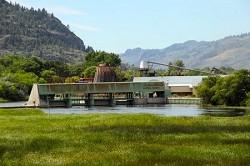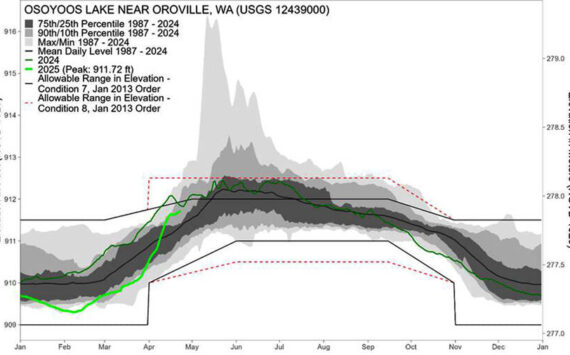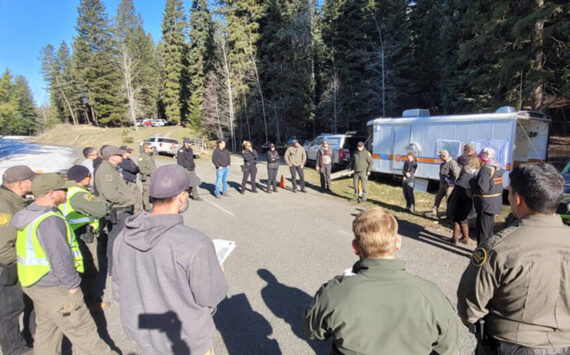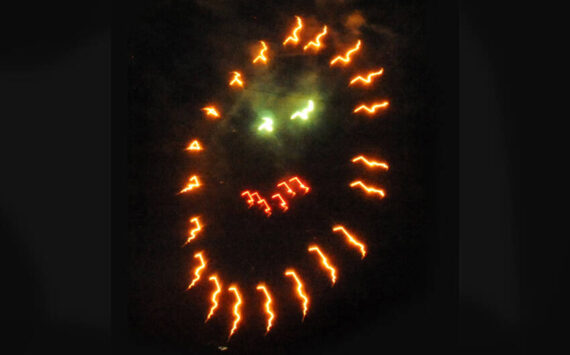
The gates on Zosel Dam are holding back additional water on Lake Osoyoos due to a predicted drought this summer in the Canadian Okanagan. Because of higher than normal rainfall the international board that regulates the lake level has decided to begin the
YAKIMA – Additional water held at Zosel Dam in response to a regional drought declaration will soon be released, according to the state Department of Ecology.
The International Osoyoos Lake Board of Control (IJC) made the drought declaration when it was determined this spring that the Canadian Okanagan could face severe drought this summer. The IJC is in charge of setting levels on Osoyoos and the Oroville-Tonasket Irrigation District operates Zosel Dam, owned by Ecology. The Irrigation District, which provides water to approximately 10,000 acres of farm land has a water right on Lake Osoyoos of one acre foot of water in case of drought in the American North Okanogan.
Earlier this month, the joint board made up of American and Canadian interests formally declared a drought for the Okanagan Valley in British Columbia, Canada, for 2010. However, on June 21, the board
formally rescinded the drought declaration, due to above normal rainfall in the upper Okanagan watershed during the month of June. The lake straddles the border. The declaration affects the regulation of the lake as well as downstream flows in the Okanogan River below Zosel Dam in Washington.
Drought is declared in the region when one of three conditions is met. In this case, one had been declared because the predicted flow in the Similkameen River was expected to be less than 1 million acre-feet between April and July. As of June 17, the National Weather Service predicts flows will be at 1.17 million acre-feet this year. Based on this and other formal considerations, the board decided to rescind the drought declaration.
In accordance with the international board’s approval, the lake level will now be lowered back to the normal operating level of 911.5 feet elevation by July 13. This level will be maintained until the end
of October. The international board governs how the lake is regulated on both sides of the border.
Coordination among local natural resources agencies, downstream users and Canadian authorities will determine at what rate the lake is lowered. As the lake is currently below 912.4 feet, the process of
lowering the lake less than a foot should be gradual.
“The weather in the area continues to provide some uncertainty,” said Al Josephy, with Ecology’s water resources program in Olympia. “For instance, the Similkameen River influences flows in the Okanogan River and when it is high, as it is now, it forces the levels of Osoyoos to rise unpredictably.”
The Department of Ecology continues to monitor the situation daily.






